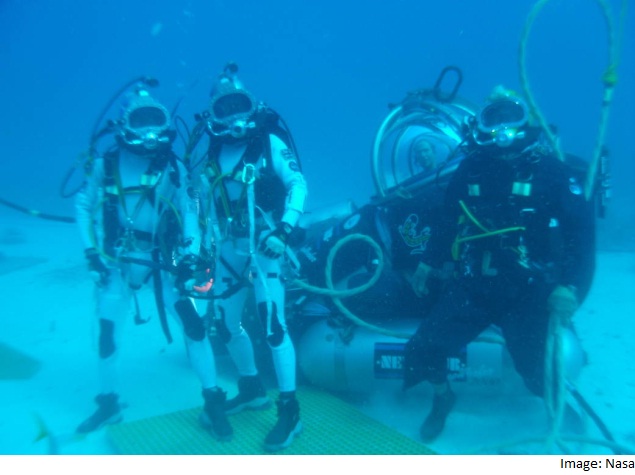- Home
- Science
- Science News
- Nasa Prepares for Deep Space Missions With Undersea Expedition
Nasa Prepares for Deep Space Missions With Undersea Expedition

Neemo 20 will focus on evaluating tools and techniques being tested for future spacewalks on a variety of surfaces and gravity levels ranging from asteroids to the moons of Mars and the Martian surface.
"The Neemo team is particularly excited about this mission as it is a huge milestone to have achieved 20 missions at Aquarius over the past 15 years," said Bill Todd, Neemo project leader.
"Living and working in the highly operational, isolated and extreme environment of the aquatic realm has provided significant science and engineering for the benefit of human spaceflight. It has also clearly proven to be as close to spaceflight as is possible here on the Earth," Todd said.
The mission will test time delays in communications due to the distance of potential mission destinations.
They will also assess hardware sponsored by the European Space Agency (ESA) that allows crew members to read the next step in a procedure without taking their hands or eyes away from the task using a tablet, a smartphone and a head-mounted interface.
Earlier this month, Nasa researchers revealed a mission architecture for a manned mission to Mars that is considered to be a more efficient and cost-effective way than previous plans. In the plan, astronauts must first be prepared to touch down on one of Mars' two tiny moons - Phobos or Deimos, which will also minimise the risks involved. The new mission architecture envisages landing astronauts on Phobos by 2033, and then down to Mars by 2039.
Written with inputs from IANS
Get your daily dose of tech news, reviews, and insights, in under 80 characters on Gadgets 360 Turbo. Connect with fellow tech lovers on our Forum. Follow us on X, Facebook, WhatsApp, Threads and Google News for instant updates. Catch all the action on our YouTube channel.
Related Stories
- Samsung Galaxy Unpacked 2025
- ChatGPT
- Redmi Note 14 Pro+
- iPhone 16
- Apple Vision Pro
- Oneplus 12
- OnePlus Nord CE 3 Lite 5G
- iPhone 13
- Xiaomi 14 Pro
- Oppo Find N3
- Tecno Spark Go (2023)
- Realme V30
- Best Phones Under 25000
- Samsung Galaxy S24 Series
- Cryptocurrency
- iQoo 12
- Samsung Galaxy S24 Ultra
- Giottus
- Samsung Galaxy Z Flip 5
- Apple 'Scary Fast'
- Housefull 5
- GoPro Hero 12 Black Review
- Invincible Season 2
- JioGlass
- HD Ready TV
- Laptop Under 50000
- Smartwatch Under 10000
- Latest Mobile Phones
- Compare Phones
- Honor Win RT
- Honor Win
- Xiaomi 17 Ultra Leica Edition
- Xiaomi 17 Ultra
- Huawei Nova 15
- Huawei Nova 15 Pro
- Huawei Nova 15 Ultra
- OnePlus 15R
- Asus ProArt P16
- MacBook Pro 14-inch (M5, 2025)
- OPPO Pad Air 5
- Huawei MatePad 11.5 (2026)
- Xiaomi Watch 5
- Huawei Watch 10th Anniversary Edition
- Acerpure Nitro Z Series 100-inch QLED TV
- Samsung 43 Inch LED Ultra HD (4K) Smart TV (UA43UE81AFULXL)
- Asus ROG Ally
- Nintendo Switch Lite
- Haier 1.6 Ton 5 Star Inverter Split AC (HSU19G-MZAID5BN-INV)
- Haier 1.6 Ton 5 Star Inverter Split AC (HSU19G-MZAIM5BN-INV)

















